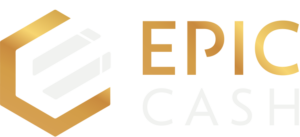
Epic Private Parallel Economy
What is a private parallel economy?
Regardless of whether you are an individual, a service provider, a small business or a large retailer, Epic Cash’s private parallel economy can be tailored to your needs. At the heart of this private parallel economy is the most sound and private money ever created… Epic Cash.
For merchants and service providers, we have developed the Epic Cash Payment Processor, which quickly and easily allows you to convert fiat currency invoices into an Epic Cash QR code, to be read and paid for by the customer’s Epic Pay mobile wallet.
We also have developed a simple QR Code Generator for those who simply want to share their Epic Cash receive address with others.
In the very near future, when the world goes cashless and Central Bank Digital Currencies (CBDCs) are implemented, a private parallel economy will be crucial to your family’s and community’s survival.
How do CBDCs extend government power over individuals?
Understanding how CBDCs extend government power over individual financial freedoms requires a closer look at the mechanisms at play.
First, CBDCs provide authorities with a level of surveillance that is unparalleled in traditional financial systems. Every CBDC transaction is recorded on a central ledger, allowing for real-time monitoring. Governments can track the flow of money, identify income and expenditure patterns, and even trace the origins and destinations of funds.
Second, CBDCs can be programmed to limit your freedoms, given that governments can impose restrictions on how CBDCs can be spent. This level of micromanagement can fundamentally alter the concept of financial freedom, as citizens may find themselves operating under predefined parameters set by their government.
This could extend to the ability to freeze or restrict access to funds based on specific criteria set by governments. For example, in a hypothetical scenario where vaccines are mandated, governments could determine the individual’s level of financial freedom based on their vaccine status. Individuals who do not comply with such measures might find their transactions blocked or their accounts restricted.
What can be done then?
In light of this, if you would like to continue having unfettered access to local services and healthy, locally-grown produce after the introduction of CBDCs, tell your friends, neighbors, service providers, local farmer’s markets and businesses that the time to start accumulating Epic Cash and joining the Epic Private Parallel Economy is now.
A Real-world Use Case for Epic Cash.
Crypto means different things to different people. Some enjoy the technical challenges of combining hardware and software to mine coins into existence, others are stimulated by the thrill of victory – or agony of defeat – of trading crypto, while yet others simply wish to use crypto as a savings account. But for Epic Cash to realize its true potential and gain real-world use-case value, it must be used as a currency.
In order to facilitate the adoption of Epic Cash by merchants, we have developed the Epic Merchant Payment Processing Methodology. This takes into account the unique requirements of Epic Cash transactions, which use the Mimblewimble protocol to ensure transaction privacy. A technical discussion regarding this topic is available at our GitHub repository.
Payment Processing with Epic.
Generally speaking there are three types of payment scenarios: individuals, small businesses and large enterprises.
Individuals
Individuals working at thrift stores, yard sales, garage sales, flea markets or farmer’s markets can make use of Epic Cash’s mobile wallet, Epic Pay, to easily accept payment in Epic Cash.
For one-off transactions:
The seller simply uses the Epic Cash Conversion tool to convert the fiat currency amount into Epic Cash and then shares their receive address QR code with the buyer. The buyer will then scan the QR code using their mobile wallet, enter the amount to be sent and confirm the transaction. It doesn’t get any simpler than this.
For multiple transactions:
If the individual plans on carrying out repeat transactions, they can use the Payment Processor tool to generate a QR code that can be scanned and processed by the ‘Pay’ button on the buyer’s mobile wallet. In order to generate multiple QR codes using the payment processor tool, the seller will first have to create their own URL featuring their receive address and fiat currency of choice. To learn how to generate multiple QR codes on the Payment Processor tool, click here.
Small Businesses
Sellers with non-customizable, off-the-shelf point-of-sale (POS) systems use a graphical user interface (GUI) wallet at each checkout location and a laptop or tablet connected to the Payment Processor tool to generate QR Codes. The QR code created by the seller contains the amount payable, the receive address and all other information required for the buyer to make the payment by simply tapping the ‘Pay’ button on their mobile wallet, scanning the QR code and confirming the transaction. Once the buyer has made payment, the seller uses the GUI wallet to monitor the transaction and then manually marks it as paid in the POS system when the wallet confirms the transaction.
Large Enterprises
These sellers use customizable, in-house point-of-sale (POS) systems to automatically generate invoices featuring QR codes based on the information entered into the system. These QR Codes also contain all information required for the buyer to make the payment by simply tapping the ‘Pay’ button on their mobile wallet, scanning the QR code and confirming the transaction. Large enterprises also utilize APIs embedded in their wallets to monitor transaction status on the blockchain and to automatically update payment status on their POS system.

